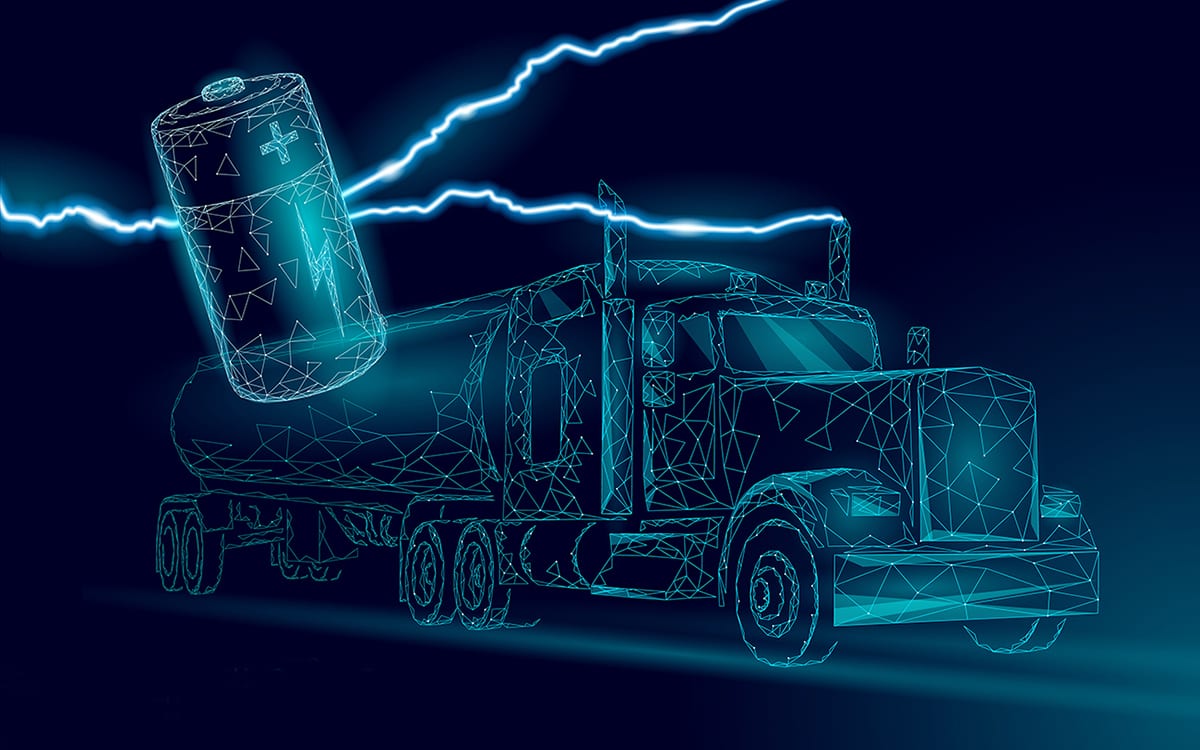
With two webinars down and eight to go, the North American Council on Freight Efficiency (NACFE) and RMI’s Electric Truck Bootcamp series is off to an electrifying start. Beginning this past April, the 10-part program shines a light on an already popular topic in the trucking industry — fleet electrification.
“NACFE and RMI created the Bootcamp to help fill gaps we heard from the industry in terms of baseline knowledge about electric trucks and everything involved in successful deployments, and we’ve been blown away by how hungry the industry is for education, professional development opportunities, and discussions of key opportunities and challenges,” said Jessie Lund, senior associate at RMI. “We’ve also been incredibly fortunate to have so many wonderful subject matter experts willing to share their expertise with the industry. And we’re just getting started — we plan to cover a host of additional topics this summer and still have eight great trainings coming up.”
“We’ve been blown away by how hungry the industry is for education, professional development opportunities, and discussions of key opportunities and challenges.”
Hitting the Ground Running
The first webinar — What’s Driving Electric Trucks? — gave attendees an overview of the ins and outs of this emerging technology and what is driving its adoption. Its speakers, a mix of OEMs, suppliers, and policy experts, detailed not only the surge in interest in electric trucks, but the way the industry is driving forward to meet the demand with the equipment, training, and funding needed to make this technology more accessible to fleets.
“Electric truck sales are expected to soar to over 50,000 vehicles on the road in just the next four years,” said Lund, during the first webinar. “There are a lot of key trends driving their popularity.”
The discussed trends included the increase in electric truck model availability, the continued drop in costs to both the vehicles and their necessary charging infrastructure, and the political movement towards zero-emission vehicles. This crusade was highlighted by Kathy Kinsey, senior policy advisor at Northeast States for Coordinated Air Use Management, who highlighted the memorandum of understanding that was signed by 15 states and the District of Columbia, pledging to develop a plan to eliminate diesel emissions by 2050.
“There is a lot states can be doing and should be doing in the policy arena to support bus and truck electrification.”
“There is a lot [that] states can be doing and should be doing in the policy arena to support truck and bus electrification,” said Kinsey, stressing the need for utilities involvement in the process. “I can’t overemphasis the importance of fleet-utility partnership and coordination for grid interconnection, investment in charging infrastructure, development of new commercial rates, and so on.”
Focusing on Infrastructure
Without the right infrastructure, the adoption of any fuel type would move at a snail’s pace, and more so with electric vehicles, which have a longer “fueling” time than other clean vehicle technologies. But this is not stopping fleets from showing interest, according to panelists from the second webinar, Charging 101 – Planning & Buildout.
“Fleet owners and operators are looking to electrify to improve their bottom line as well as the communities they operate in.”
“Electric trucks present both economic and environmental benefit given their high utilization lifecycles,” said Steve Bloch, western regional vice president of e-mobility at ABB, a presenter during the second webinar. “Fleet owners and operators are looking to electrify to improve their bottom line as well as the communities they operate in.”
Included in the discussion of charging infrastructure was a presentation of Daimler Trucks North America’s (DTNA) Electric Island, a first-of-its-kind heavy-duty electric truck charging site. Joe Colett, technical manager of charging services at Portland General Electric, gave attendees insight into the project, which the utility partnered on with DTNA. Before selecting the equipment to be installed, Colett stressed the importance of creating a proper layout for your charging site.
“One place you’ll really want to spend a lot of time on upfront is [creating] an optimal layout of your site,” said Colett, describing the time it took to ensure that heavy-duty electric vehicles could easily and safely enter and exit the site.
“You’ll really want to spend a lot of time upfront creating an optimal layout of your charging site.”
On to the Next One…
The Electric Bootcamp is just getting started with eight more webinars to come leading up to a workshop at this year’s 10th annual Advanced Clean Transportation (ACT) Expo, which will be held August 30 to September 2, at the Long Beach Convention Center in Southern California. Register by this Friday, May 14, to take advantage of the early bird rate.
“The industry is moving to electrified vehicles faster than previously anticipated,” said Steve Slesinski, director of global product planning at Dana and one of the first webinar’s panelists. “Fleets and OEMs, current and new, are seeking proven and reliable electrified vehicle systems that can be put into service today. These bootcamp sessions are an excellent forum to get up to speed quickly, directly from the industry experts.”
"electric" - Google News
May 12, 2021 at 09:09PM
https://ift.tt/33D5qIx
Electric Truck Webinar Series Charges Ahead - Advanced Clean Tech (ACT) News
"electric" - Google News
https://ift.tt/2yk35WT
https://ift.tt/2YsSbsy
Bagikan Berita Ini














0 Response to "Electric Truck Webinar Series Charges Ahead - Advanced Clean Tech (ACT) News"
Post a Comment